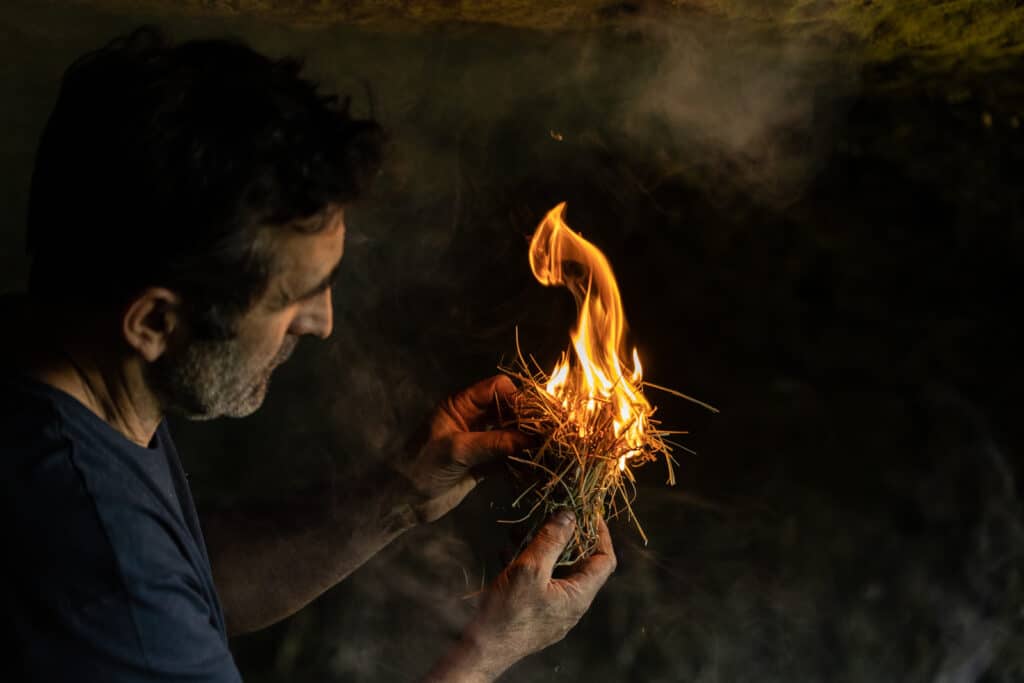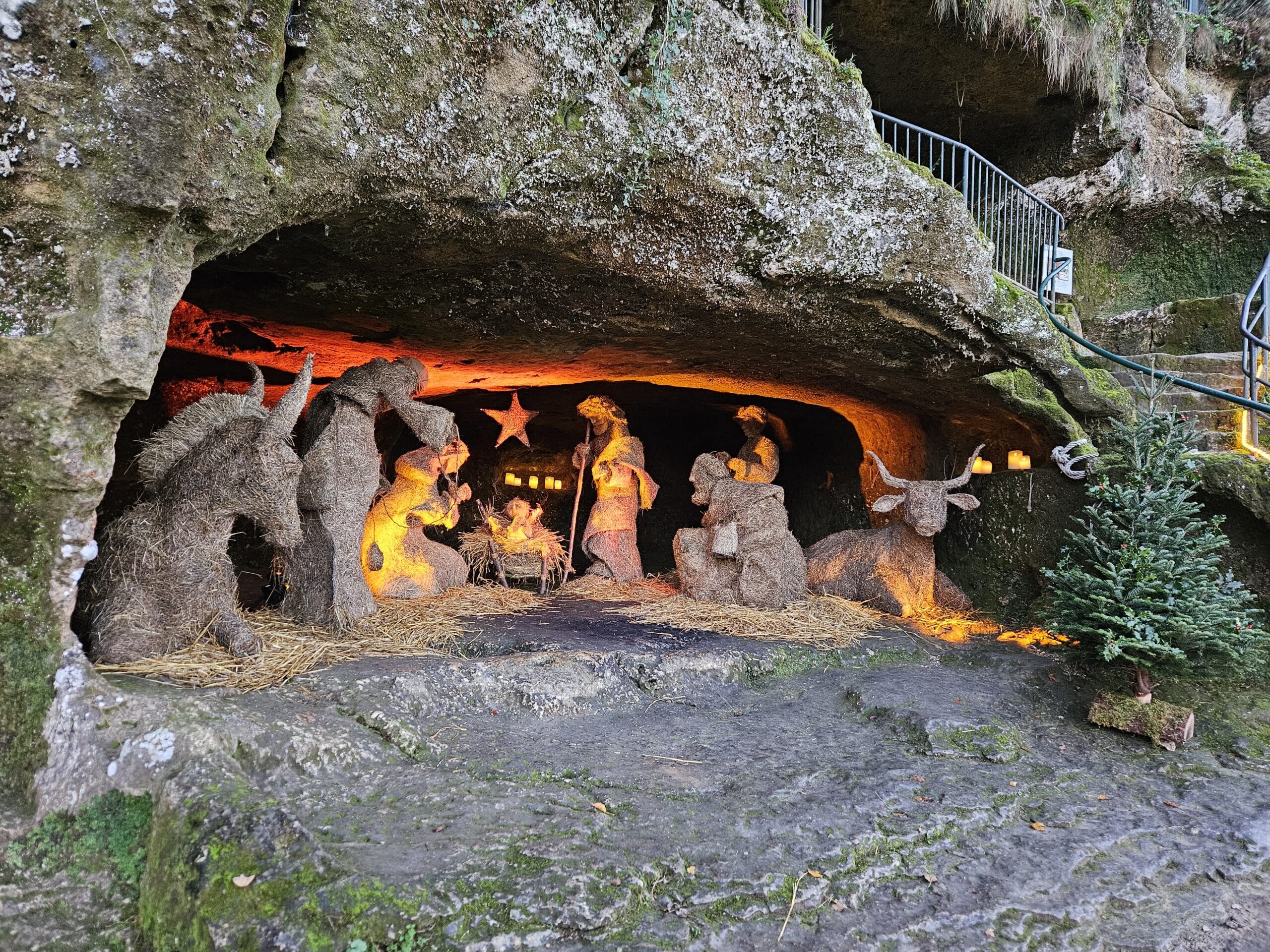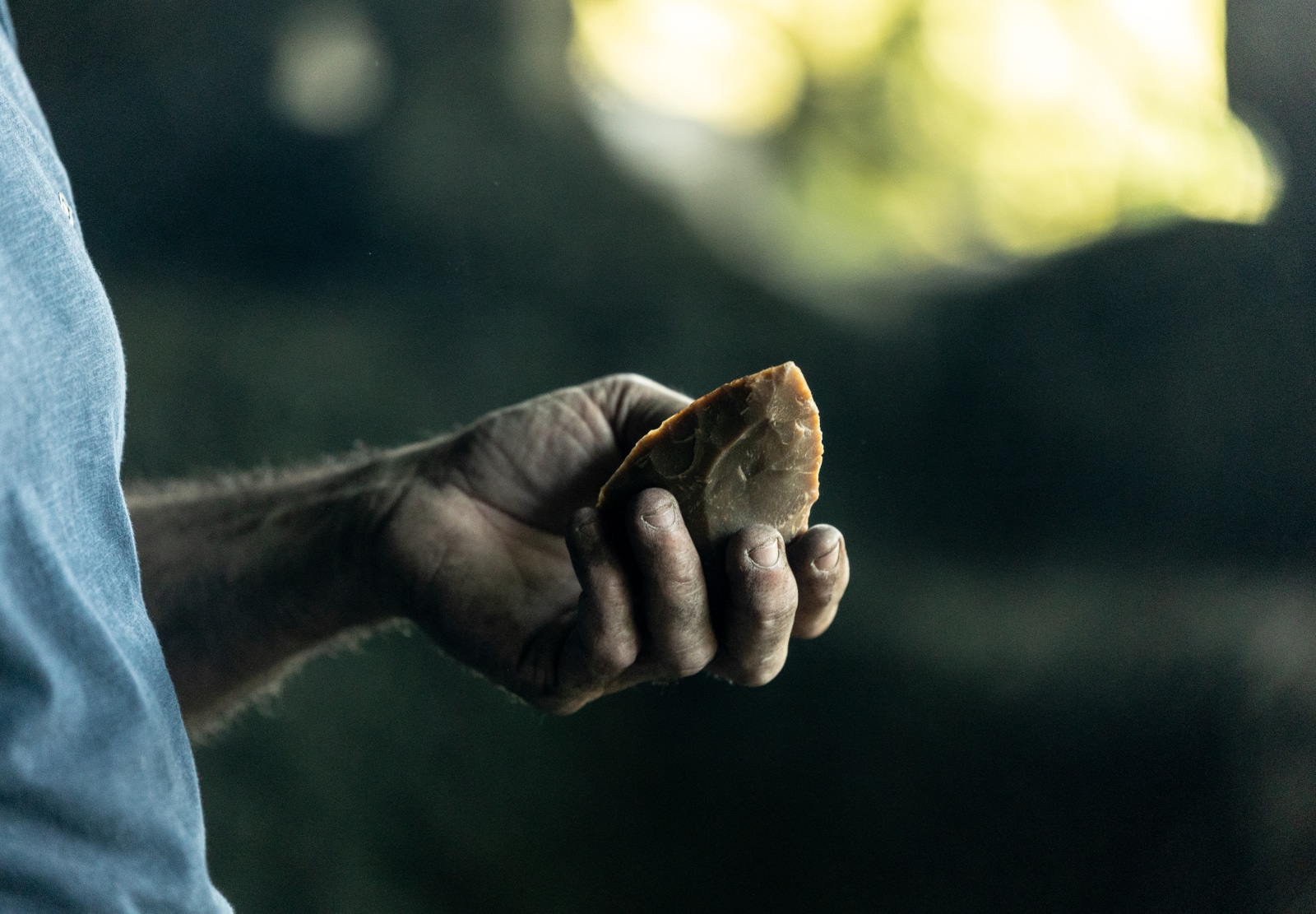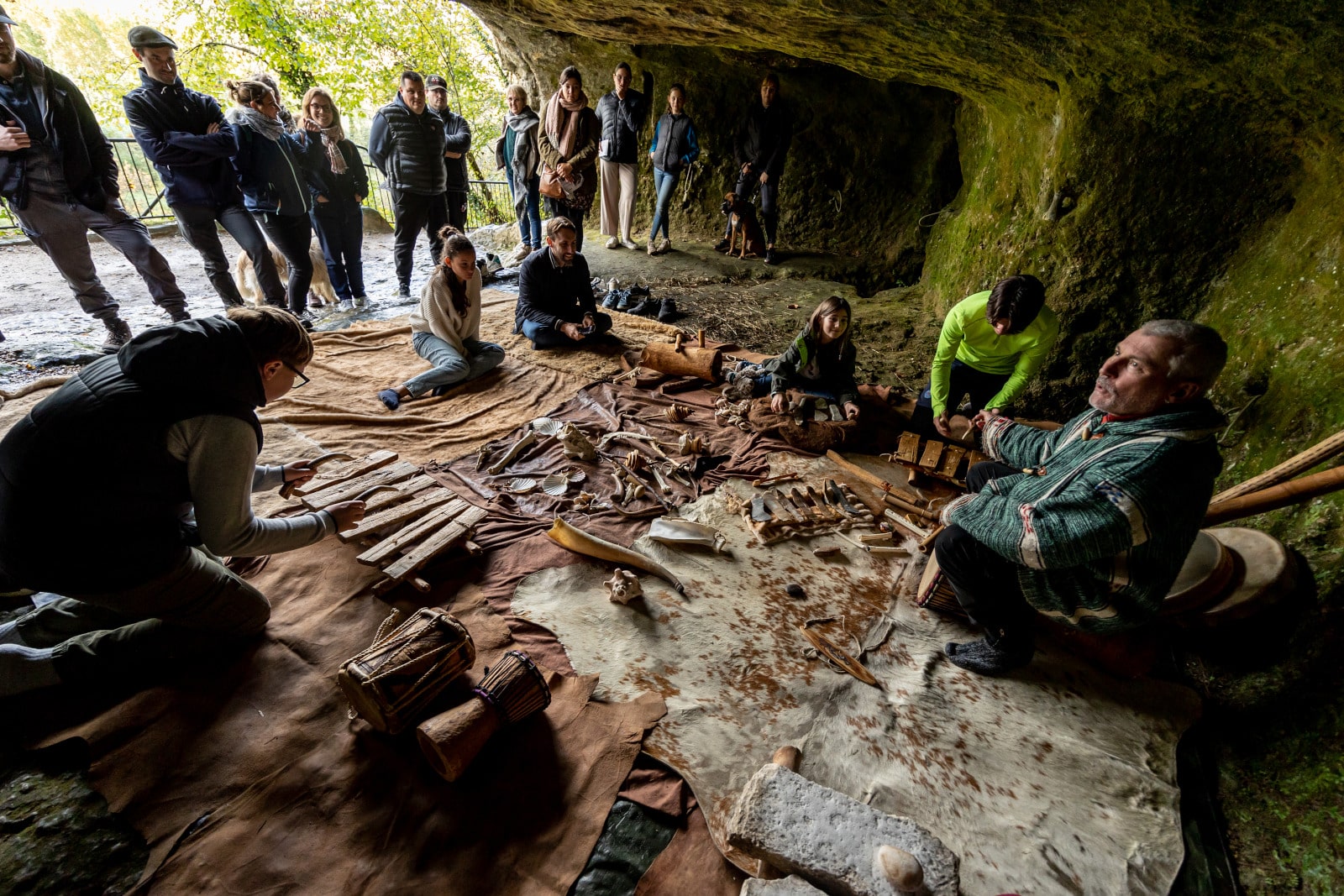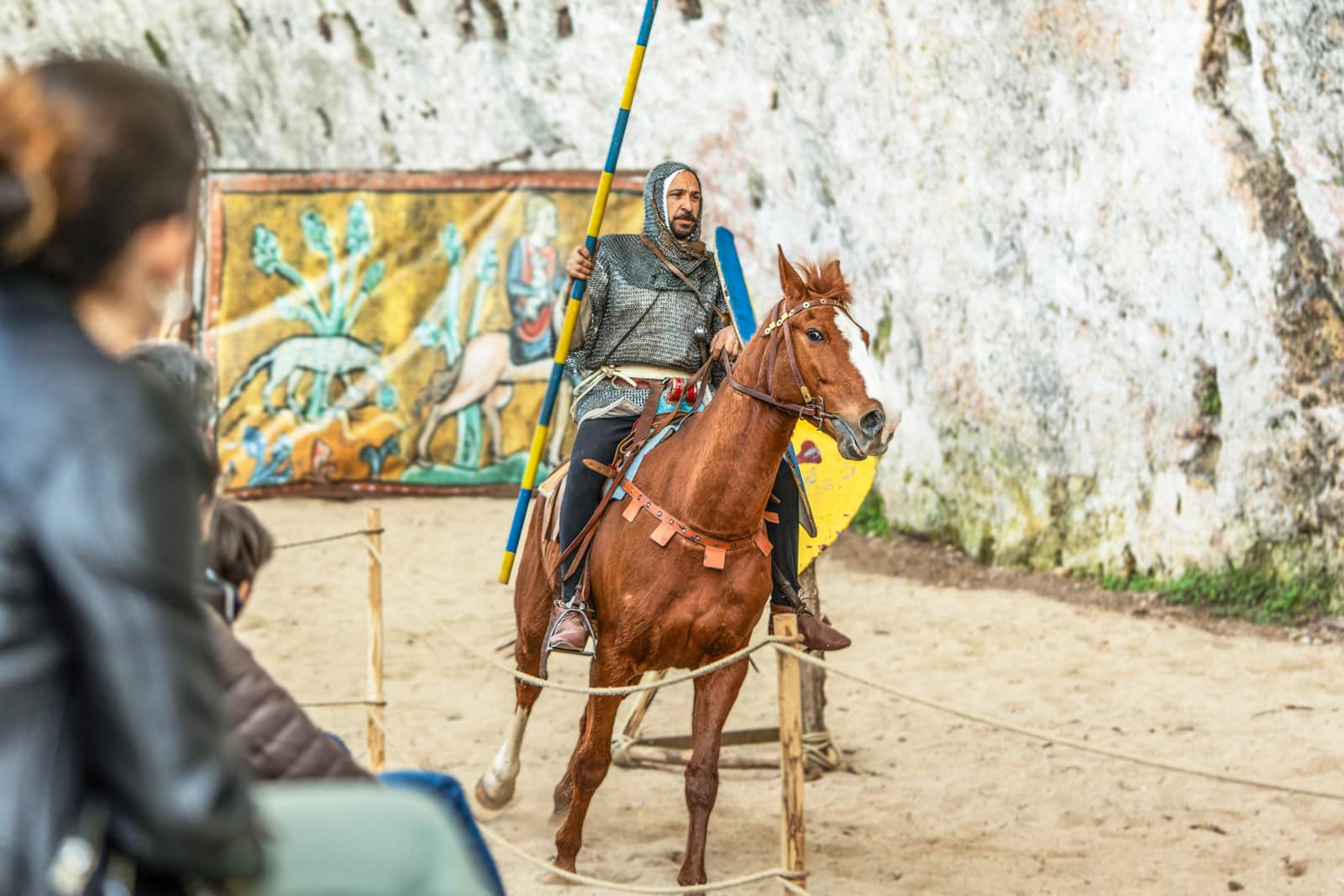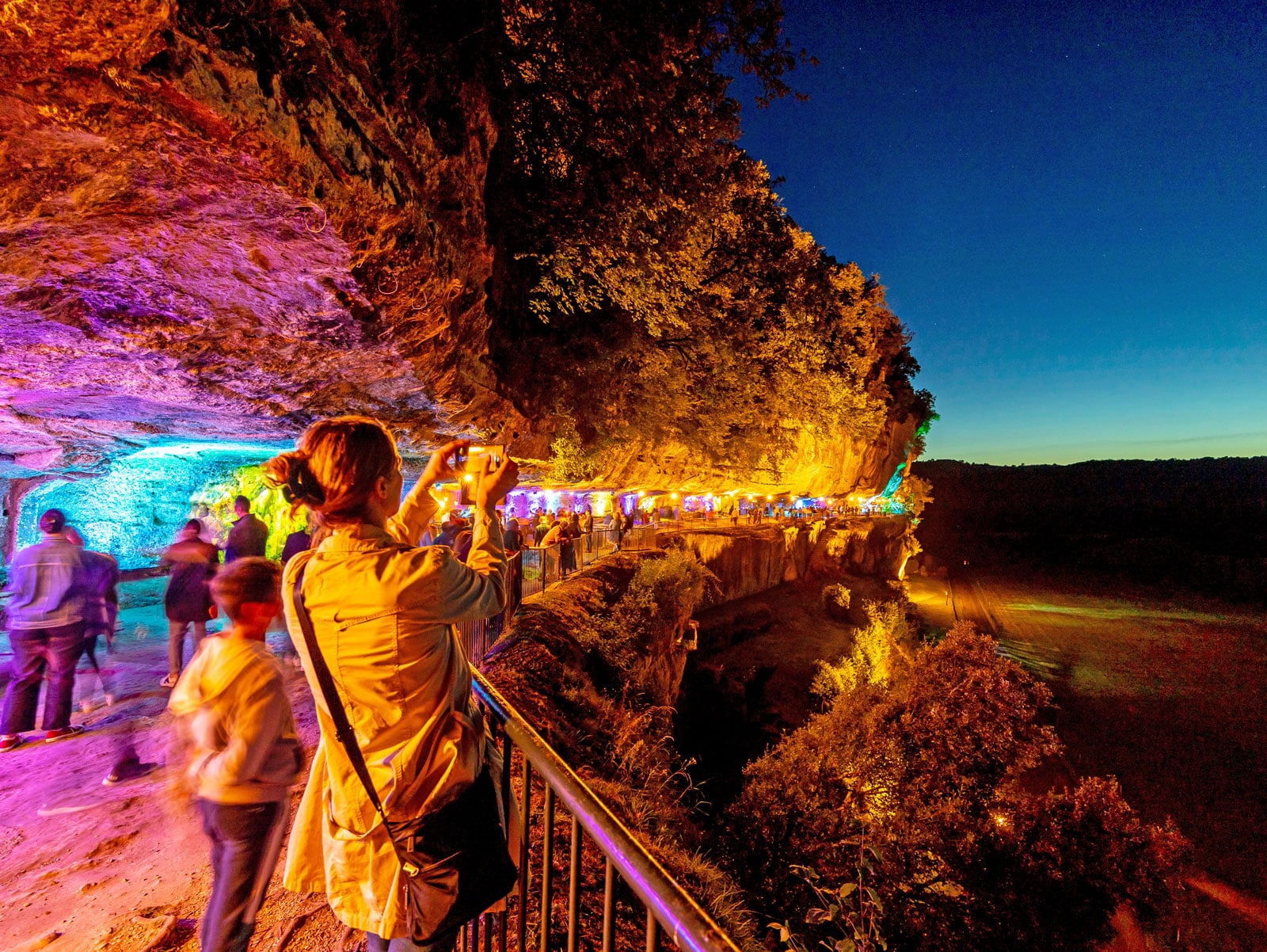Discover flint knapping and prehistoric fire lighting at La Roque Saint-Christophe
Travel back in time and discover the ancestral gestures of our distant ancestors during the “Flint Knapping and Fire Lighting” observation workshop in La Roque Saint-Christophe, in the Dordogne. A fascinating experience that immerses you in the heart of prehistory, in an exceptional troglodyte setting.
Book your ticket to la Roque Saint-ChristopheThe art of flint knapping: prehistoric know-how in Périgord
How to knead a flint? How can you tell if a flint you’re holding in your hand has been kneaded? These are ancestral tools used for cutting, but are also transformed into accessories for spears, for example, or for axes, harpoons, etc. Kneaded flints are a treasure… During these prehistoric activities, archaeology also helps distinguish the different kneading techniques. Flakes, cores, hammerstones, bay leaves, direct or indirect kneading… this is the Neolithic period (lithic meaning polished stone, therefore “new polished stone”).
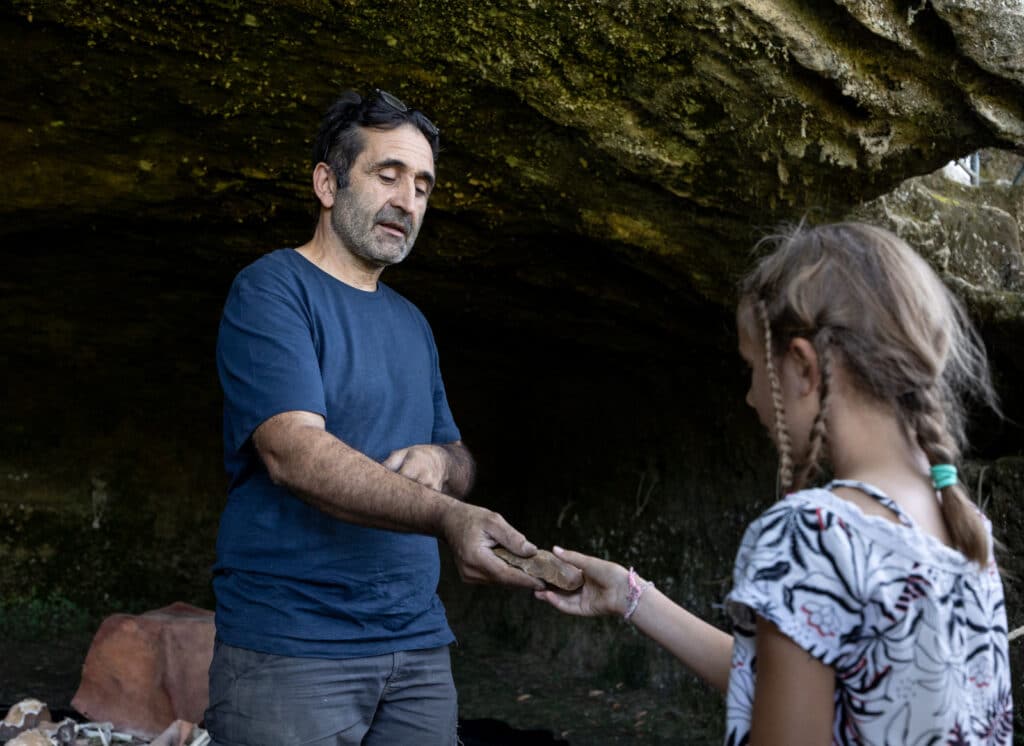
Learn to light a fire like prehistoric men
There were no lighters or matches at the time. So how did they light fires? There were two techniques, one of which is more widely used than the other, according to archaeological research. We all tried rubbing two pieces of wood together to create heating by gyration (when it turns and there is friction) in a groove that ignites a dry material. A long, random and difficult technique… Research has shown that two struck flints do not return a sufficiently qualitative spark (it is said to be cold) to light a fire. It was therefore necessary to strike a piece of mineral (marcasite or pyrite) against a flint and near a piece of tinder (a fungus found on hornbeams and birch trees) which naturally contains a rapidly flammable substance. The slow combustion then allows the nascent flame to be placed on dried grass or straw, to create a fire.
📅 Practical information
- Duration: approximately 45 minutes
- Minimum age: There is no upper age limit as there is no hands-on experience
- Included in the tour: Yes (depending on the time of year)
- Location: La Roque Saint-Christophe, Peyzac-le-Moustier (Dordogne)
- Activity periods: All Saints’ Day holiday: Every Monday and Tuesday, from 2 p.m. to 5:30 p.m.
